It was February 1994, almost 27 years ago. I was on a memorable three-part trip to the Far East, gathering information for Coming to Texas / International Students at the University of Texas. I had already met with Dr. Kim Soo-gon in Jeonju, Korea and Sue Chang in Taipei, Taiwan. The third (there would be 25 in the end) was Dr. Ramon Kintanar. I would be seeing him in Quezon City, a suburb of 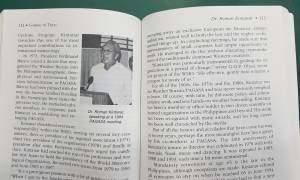 Manila, Philippines. This brilliant man, who would head the country’s weather bureau for almost 40 years, gave me an interview divided into four parts over two days; as with Dr. Kim and Ms. Chang, I had come prepared with many questions and topics for discussion.
Manila, Philippines. This brilliant man, who would head the country’s weather bureau for almost 40 years, gave me an interview divided into four parts over two days; as with Dr. Kim and Ms. Chang, I had come prepared with many questions and topics for discussion.
Dr. Kintanar was somewhat amused when I informed him that I could not leave without having taken an excursion on a jeepney. He called one of his assistants, a young woman named Violet, and told her of my desire. She and I went out, climbed aboard one of these gawdy vehicles and took a quick tour of QC. I think we passed City Hall, Quezon Memorial Circle and Veterans’ Hospital, along with a few barangays. Violet and I were back at PAGASA (Philippine Atmospheric, 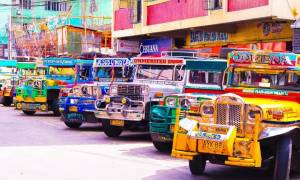 Geophysical and Astronomical Services Administration) headquarters an hour later, enabling me to resume my convo with the good doctor.
Geophysical and Astronomical Services Administration) headquarters an hour later, enabling me to resume my convo with the good doctor.
The name derives from general-purpose vehicles (GPs, and thus “jeeps”) used by the U.S. military during World War II. British taxis known as “jitneys” had plied the roads for 20 years before that. With the conclusion of fighting against the Japanese—the month-long Battle of Manila was one of the horrors of the war, with more than 100,000 civilians dead and the city thoroughly devastated—the Americans had to get rid of thousands of these simple and rugged cars. A soldier named Harry Stonehill set up a lucrative black  market, and Philippine ingenuity came to the fore as men with wrenches, blowtorches and other equipment converted them into something else entirely. The bodies were lengthened, roofs were created and welded on, and two bench seats were added in the back, with room for 10 passengers.
market, and Philippine ingenuity came to the fore as men with wrenches, blowtorches and other equipment converted them into something else entirely. The bodies were lengthened, roofs were created and welded on, and two bench seats were added in the back, with room for 10 passengers.
Of course, it was not uncommon for a jeepney to hold more than 10 people, as there were hitchers, clingers and “top-loaders”—those who sat precariously on the roof. From the start, it was cheap and basic transportation for working-class Filipinos. Getting across Manila four years ago on a jeepney cost just 16 cents.
But I have not yet attempted a description of how jeepneys were and are decorated. Owners and drivers (there are about 270,000 franchised jeepneys in the country, with 75,000 in metro Manila) employ flashy ornaments, lots of chrome and the brightest colors imaginable. Drawings of Mother Mary are not  uncommon, with snappy names and phrases—anything to distinguish this jeepney from that one and all the others. Some critics have called jeepney artwork “kitsch,” but I disagree. I see it as exemplifying this country’s vibrant culture.
uncommon, with snappy names and phrases—anything to distinguish this jeepney from that one and all the others. Some critics have called jeepney artwork “kitsch,” but I disagree. I see it as exemplifying this country’s vibrant culture.
Despite a certain amount of petty crime among passengers, there has long been an honor system. That is, when you board, you hand your money to the lady in front of you, she hands it to the man ahead of her…and it eventually gets to the driver. Violet did this, as I recall.
Lacking an integrated system of national transportation, the Philippines made do decade after decade with jeepneys. What obtained right after World War II is far from what is seen in the third decade of the 21st century, as we have what are now called third-generation jeepneys; some are even “comfortable” and have air-conditioning and a stereo system.
Suitable to the task, they are regarded as Philippine cultural icons. Why else would this American have asked specifically for the chance to ride in one? But truthfully, there have always been problems—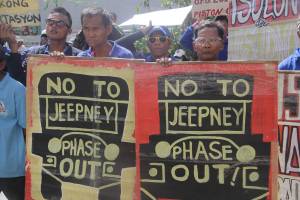 jeepneys with bald tires, worn-out brakes and sagging frames. Passengers do not have seat belts, and side-impact collisions often result in deaths and awful injuries. They clog up traffic and are notorious polluters.
jeepneys with bald tires, worn-out brakes and sagging frames. Passengers do not have seat belts, and side-impact collisions often result in deaths and awful injuries. They clog up traffic and are notorious polluters.
For this reason, in 2016 President Benigno Aquino III proposed a phaseout of the beloved but rickety jeepney. Could the “king of the road” be headed for oblivion? Aquino left it up to his successor, Rodrigo Duterte, to implement that policy. Jeepney riders—most of them, at least—are not in favor and jeepney owners—every single one of them—feel the same. They have pushed back against the government’s proposed modernization scheme. Protest caravans have gone around in cities such as Manila, Cebu and Davao, petitions have been signed, people have gone to jail, and the resistance movement remains quite strong. Their motto is Ibasura ang Jeepney Phaseout (“No to the Jeepney Phaseout”). It is understandable that those with a financial investment in jeepneys would refuse to acquiesce.
Duterte, a strong-willed ruler unafraid of hurting people’s feelings, is adamant. Since the COVID pandemic began in early 2020, most jeepneys have been banned from the streets of Manila. More eco-friendly and roadworthy vehicles are needed, says Malacanang Palace. But, respond jeepney drivers and owners, the model the government proposes (with a “Euro-4” engine) costs 1.7 million pesos, or  $30,000—way beyond their means. Many such men have begun dismantling their vehicles and selling the parts for pennies on the dollar. Worse, ex-jeepney drivers can be seen along many streets begging for alms. This industry, long rooted in local manufacturing and repair, seems to be on its deathbed with foreign corporations circling like vultures.
$30,000—way beyond their means. Many such men have begun dismantling their vehicles and selling the parts for pennies on the dollar. Worse, ex-jeepney drivers can be seen along many streets begging for alms. This industry, long rooted in local manufacturing and repair, seems to be on its deathbed with foreign corporations circling like vultures.
And yet, maybe not! Some of the jeepney associations, such as Pinagkaisang Samahan ng mga Tsuper at Operators Nationwide (PISTON) call for a compromise whereby the government pays for the vehicles to be enhanced and upgraded. “Rehabilitation” is the term they prefer. Although the Philippine economy is improving, many of the country’s 106 million people remain mired in poverty. For them, the jeepney is the only realistic way to get around.
I am as sentimental as the next person, and I would hate to see the jeepneys go. The Philippines would be a poorer (I use the term both literally and metaphorically) place if that were to happen. And if it does, we can expect a period of major chaos. I have sought the opinions of many Filipinos, including Helen 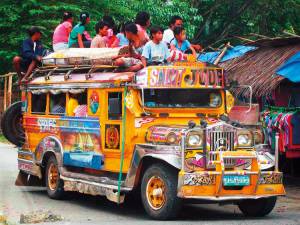 Bunagan, Dupert Gallardo and his sister Joyce, Jun-Jun Cornel and his daughter Macy Kaye, Kemelyn Bayona, Jefferson Cornel and his wife Fely, Kean Nawang, Pastor Joel Trinidad and his wife Renalie, Nasser Cornel, Lelen Lazarito, Andrea Urbano, Racerl J. Po and Ningning Kintanar (daughter of the illustrious Dr. Kintanar—who, by the way, died in 2007). They do not all agree; some say with deep reluctance that it’s the end of the road for these mobile works of art, and others insist that the phaseout should not, cannot and will not happen.
Bunagan, Dupert Gallardo and his sister Joyce, Jun-Jun Cornel and his daughter Macy Kaye, Kemelyn Bayona, Jefferson Cornel and his wife Fely, Kean Nawang, Pastor Joel Trinidad and his wife Renalie, Nasser Cornel, Lelen Lazarito, Andrea Urbano, Racerl J. Po and Ningning Kintanar (daughter of the illustrious Dr. Kintanar—who, by the way, died in 2007). They do not all agree; some say with deep reluctance that it’s the end of the road for these mobile works of art, and others insist that the phaseout should not, cannot and will not happen.

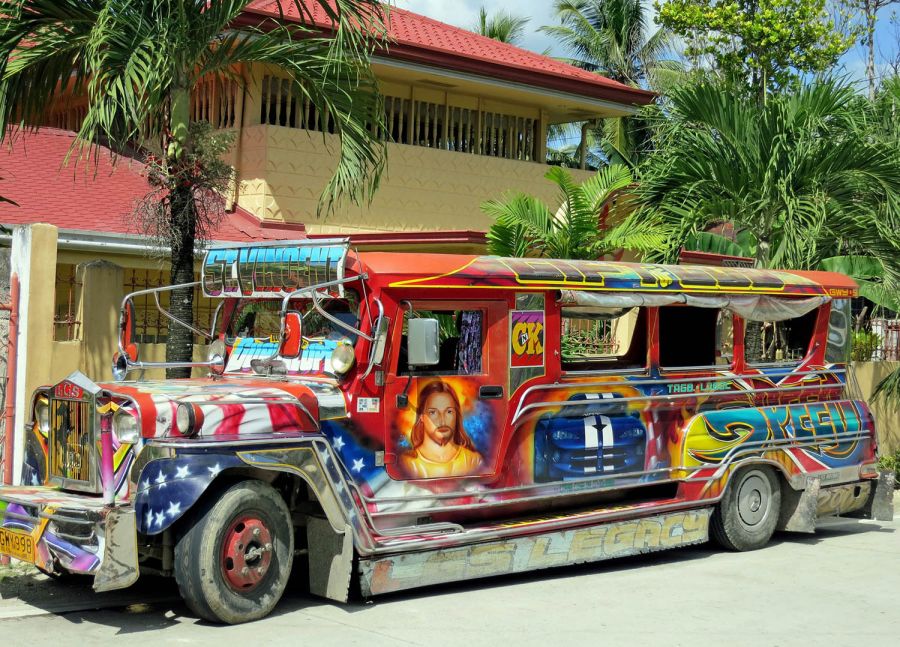
4 Comments
Because life is still quite complicated, I don’t think that this type of car will disappear.
Even if life will take another turn, I think that this type of car will be kept in the museum as a memory of the past.
Interesting text, we are waiting for as many articles as possible in the future.
I hope so, Elly.
Interesting story, Richard. But I’m afraid they’ll go the way of the inter-urbans in Texas, streetcars, and passenger trains. They’ll possibly survive, but as nostalgic curiosities or have very limited use. But that’s a very heavy handed government that decrees an industry must be destroyed!
We still have passenger trains here in Korea, Kevin…. This jeepney thing involves a lot of human pain among Filipinos, and I hate to see it.
Add Comment